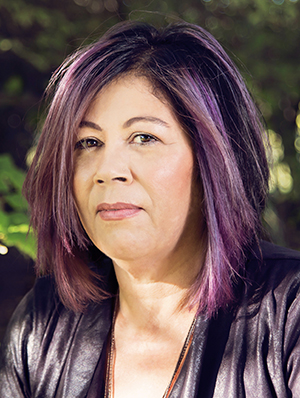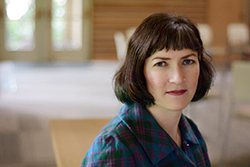Held Within: Stephanie Harrington in Conversation with Rowan McCandless

Malahat volunteer Stephanie Harrington talks with 2018 Constance Rooke Creative Nonfiction Prize winner Rowan McCandless about the hermit crab essay form, settler euro-colonialism, and considering her readiness before writing about trauma in her winning essay, "Found Objects."
Rowan McCandless writes from Manitoba's Treaty 1 territory. Her short story “Castaways,” originally published by Prairie Fire, was long-listed for the 2018 Journey Prize. In 2017 her lyric essay “A Map Of The World” won Room’s CNF Contest, and she was long-listed for PRISM international’s CNF Contest. She placed second in Prairie Fire’s 2016 Fiction Contest and Room’s 2015 Fiction Contest. Her work has appeared in Skin Deep: Race and Culture magazine and is forthcoming in the anthology, Black Writing Matters: Reflections on Contemporary Canadian Life and in The Fiddlehead. Discover more at rowanmccandless.com.
"Found Objects" examines a sexual assault you experienced as a teenager and the horrendous consequences of the crime on your psyche. Your essay uses the structure of an archaeological field study to provide, as judge Lynne Van Luven wrote, "an unexpected, yet brilliantly apt, format for a story or betrayal that is all too tragically familiar." Where did your idea for the structure of this essay originate? And how did it evolve into its current form?
I was fortunate to have taken Nicole Breit’s online course, Creative Nonfiction Outliers, in which we examined and wrote essays using a variety of experimental forms. "Found Objects" began as a writing assignment in this course.
I was particularly drawn to the hermit crab essay, in which the personal narrative is held within an adopted structure that supports the content. Having begun Nicole’s course after a recent move, I was unpacking boxes when I discovered a series of letters written during the summer I turned sixteen while working on an archaeological dig. It dawned on me that I could use the framework of an archaeological field study to relate my experience of having been sexually assaulted as a teenager while employed during that dig. Once I had the structure, the elements fell into place.
The essay’s form required a certain tone, one of observational detachment, which ultimately provided an interesting tension and contrast with the subject matter. Additional elements, like the floor plan of the house I was living in at the time, the letter from my father, were included as examples of site mapping and the cataloguing of artefacts. In some ways, “Found Objects” is as much an examination of form as it is a traumatic experience.
Roxane Gay is teaching a course at Yale this year called "Writing Trauma." Some of the questions the course examines include “How do we convey the realities of trauma and its aftermath without being exploitative?” and “How do we write trauma without cannibalizing ourselves?” Were either of these concerns on your mind when writing “Found Objects”? How did you negotiate them?
I believe that personal negotiation has to occur when it comes to writing about traumatic events. As writers, it’s important to remember that we’re under no obligation to bare our souls or to bleed past trauma on the page. I think that it’s important to know and respect your readiness as well as your boundaries. There are questions that I consider when it comes to writing and sharing such deeply personal narratives. Is this a story that I am willing to share? Have I acquired the necessary distance, the healing needed to explore the experience without being re-traumatized? How will the narrative be framed? Where do I draw the line on revealing details about my life? Examining these questions and acknowledging my answers gave me the confidence to know that I was ready to write “Found Objects” as well as to submit it to the Constance Rooke Creative Nonfiction contest.
I was particularly struck by the following line in your essay: "What traditional archaeology ignores is the importance of place and storytelling as a way to delineate history." Colonialism is another central concern of this essay. Can you talk about how your essay challenges or explores ideas of place?
I’m eighth generation Africadian on my father’s side. Like many Black families in Canada, much of our history is held within the oral tradition, which has been crucial to remembering a past that has been historically ignored or erased in this country. Land carries echoes of the past and can hold more profound meaning than a catalogued artefact held in the bowels of some museum. Writing this essay, it was important to me to examine how settler euro-colonialism views history and advancement, Indigenous people and people of colour, the land, flora and fauna. The archaeological dig that I participated in was due to the Churchill River Diversion Project which exploited natural resources, expropriated reserve lands, forcibly relocated entire Indigenous communities all for the sake of a provincial government’s desire for hydro-electric power.
What advice would you give to other writers, especially young people, who are writing about traumatic incidents?
Given that this kind of writing can be triggering, I suggest having a good support system in place to draw comfort or strength from, when and if need be. I know for myself that I can only write in a state of calm and being centred, and meditation and mindfulness rituals help with that. A bit of repetition, but it’s essential for a writer to consider their readiness; if you’ve reached a point in your healing that enables you to examine the event. I think that it’s crucial to consider self-care and pacing when writing about traumatic experiences and to recognize that at any point in the writing you can pack up and put the story away.
Forms like the hermit crab essay are especially conducive to writing about difficult subject matter. Adopting a container can provide the distance needed to write about traumatic experiences. Working in collage can be a way to explore the past before committing words onto paper. Often traumatic incidents are held as secrets and collage can be a way to circumnavigate the rule of silence.
Join a creative nonfiction writers’ group. Form trusted bonds with other writers, be part of a writing community, one in which you’ll feel comfortable sharing personal material. Find a mentor. I was fortunate to have discovered Nicole Breit and her fantastic online courses on writing creative nonfiction. Meeting and working with Nicole was life changing for me as a writer.
Writing can be therapeutic. I’ve discovered that there is an element of healing to the process of revision. To make the experience understandable to readers, you have to understand it yourself. The act of revising is like puzzle work, transforming chaos and fragmented memory into a coherent whole.

Stephanie Harrington
* * * * * * * *









